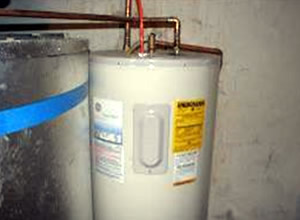- 43 reads

On February 17, 2009, President Barack Obama signed the American Recovery and Reinvestment Act (ARRA) of 2009. All told, the bill calls for the spending of $787 billion dollars over the next number of years on the expansion of unemployment benefits and other social welfare programs, and domestic spending on health care, education, and infrastructure, which includes the entire energy sector.
The bill sets aside $5 billion for the weatherizing of modest-income homes, but you have to know how to get that money. A lot of that money will be distributed as Tax Credits on the installation of new, more energy-efficient products that will help wean the United States off of its dependence on fossil fuels. Listed below are the details on Home Improvement.
The ARRA allots $4.3 billion for improving the energy efficiency of homes in 2009 and 2010. Homeowners can recoup up to 30% of the cost of one specific project up to $1,500, which also includes installation costs for heating and cooling equipment. The ARRA triples the amount available for a tax credit from $500 to $1,500. It also removes the cap on geothermal heat pumps and solar energy through 2016.
To be eligible the tax credit for improving energy-efficiency of a home, you have to be purchasing and installing products at very specific standards. There are two standards for which home improvements can qualify for the tax credit. The first is for items placed in service (installed and running) between January 1, 2009 and February 17, 2009. The terms of the tax credit are less clear for this time period, however the Internal Revenue Service will likely clarify these terms in guidance documents, which are expected to be released later this year.
The second standard, which is documented below, applies to products placed in service between February 18, 2009 and December 31, 2010. Listed below are the specifics for each Water Heating System, and while they share similarities, each product demands different levels of efficiency.
Gas, Oil, or Propane Water Heater
These products must have an Energy Factor of .82 or higher, OR they can have a thermal efficiency rate of at least 90%. All Energy Star Tankless Gas Models will qualify for the tax credit, however not all Gas Storage or Gas Condensing options are covered. For a partial list of qualifying products go to the Gas Appliance Manufacturing Association.
Electric Heat Pump Water Heater
For this product to qualify for a tax credit, it must simply adhere to the Energy Star criteria, which is an Energy Factor at or above 2. All Energy Star qualified Electric Heat Pump Water Heaters qualify for the tax credit.
Biomass Stove
A Biomass stove is one in which biomass fuel is burned to heat a home or water. Biomass Fuel means any plant-derived fuel available on a renewable or recurring basis, including agricultural crops and trees, wood and wood waste and residues (including wood pellets), plants (including aquatic plants), grasses, residues, and fibers. This product must have a thermal efficiency rating of at least 75% as measured using a lower heating value.
GREENandSAVE.com is a free resource for anyone that wants to save energy, money, and the environment. The articles, product reviews, online tools, and return on investment calculations are researched from a diverse range of public and private sector sources. Overall, the company is passionate about saving money as well as creating healthy homes, offices, and lifestyles.
For ways to improve your home without Government Assistance, take a look at GREENandSAVE.com for your next Green Home Remodeling project. Or, for more information on one major project that can save you money on utility bills, take a look at the GREENandSAVE article on Hot Water Heater Replacement.

